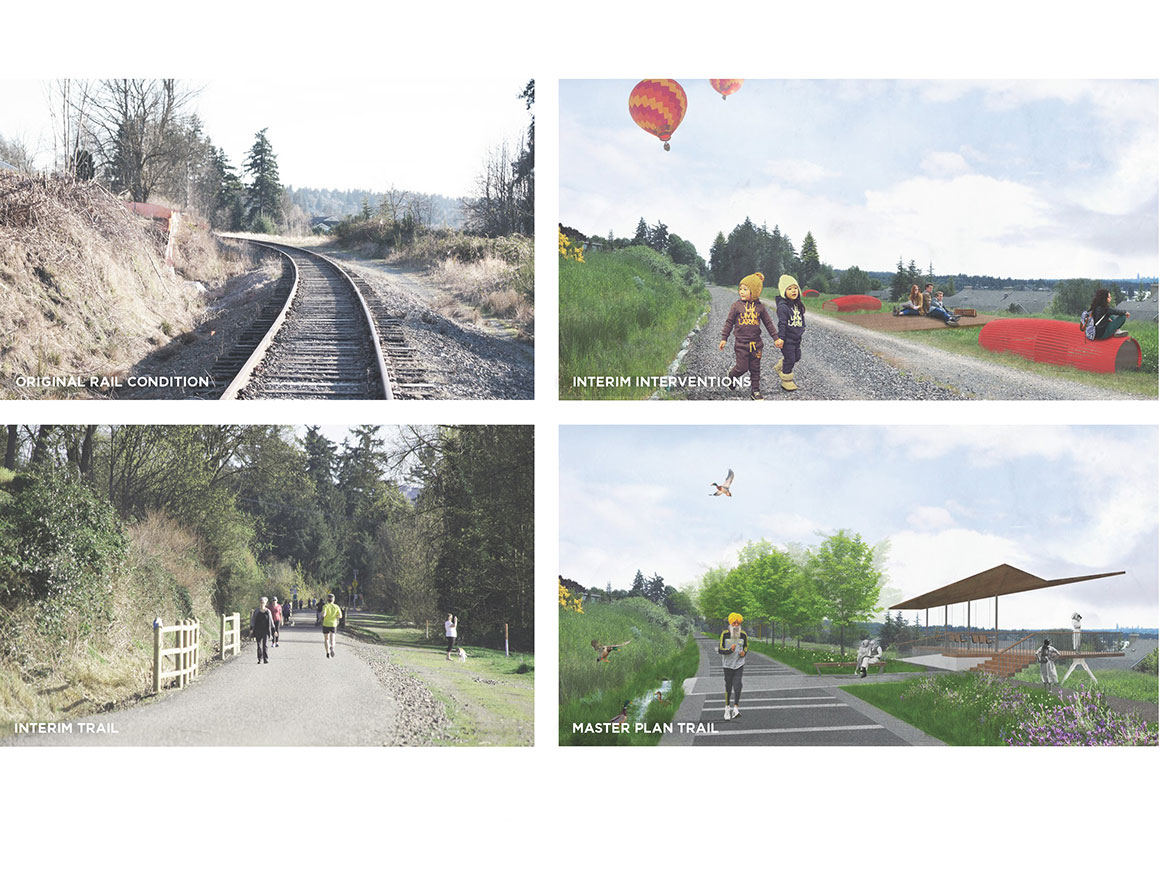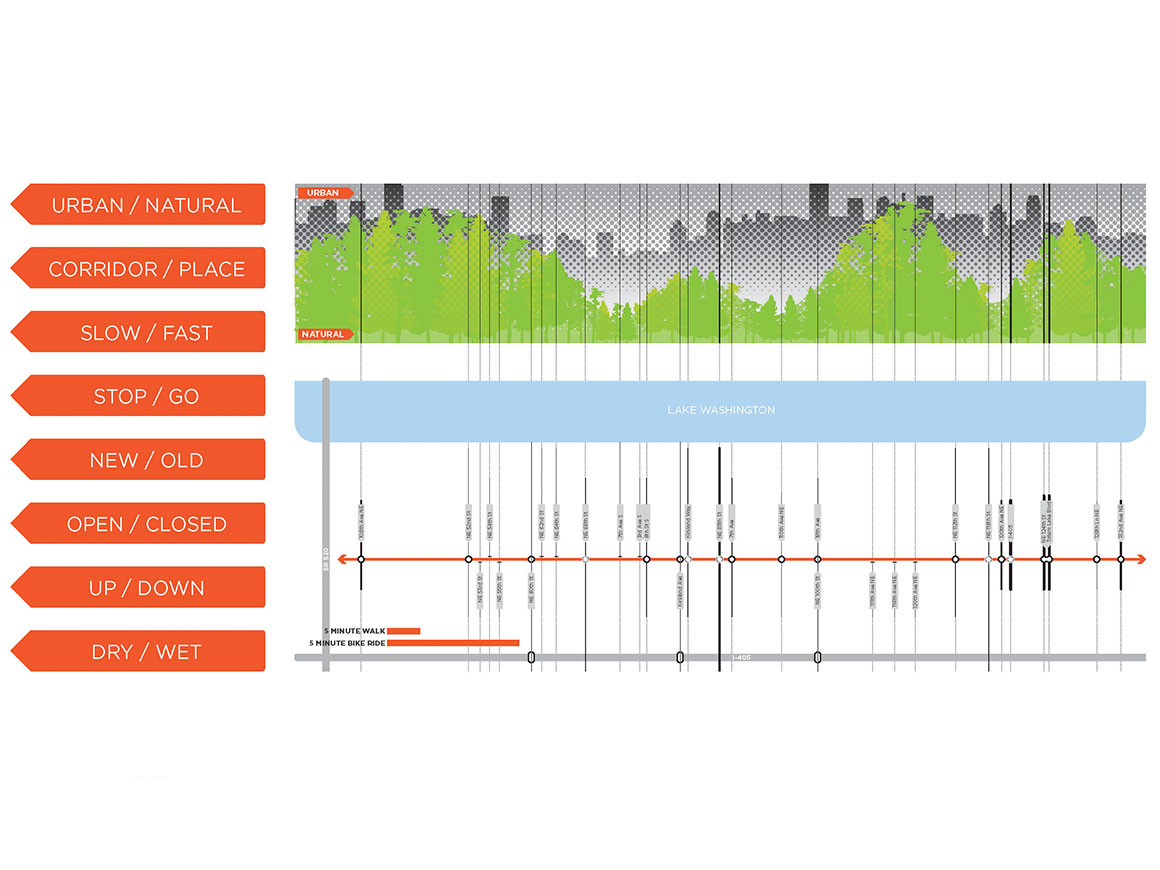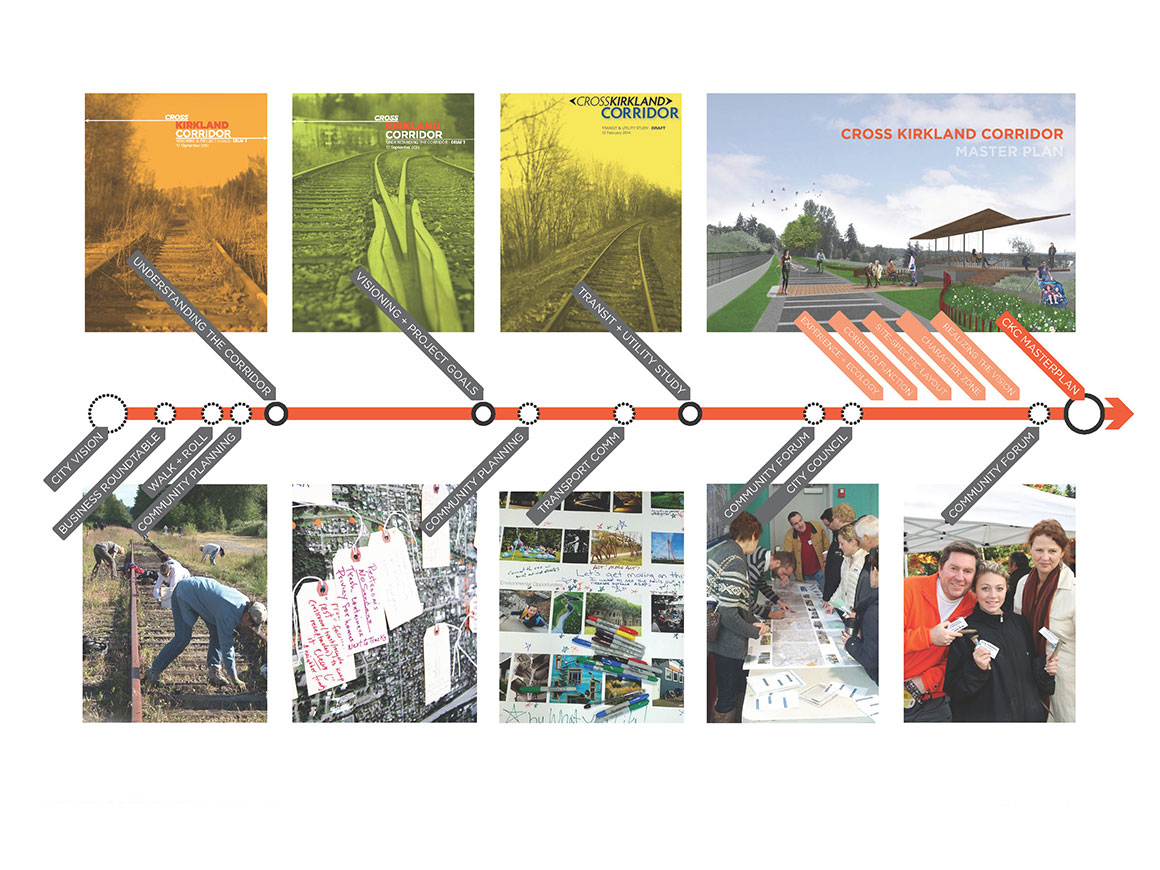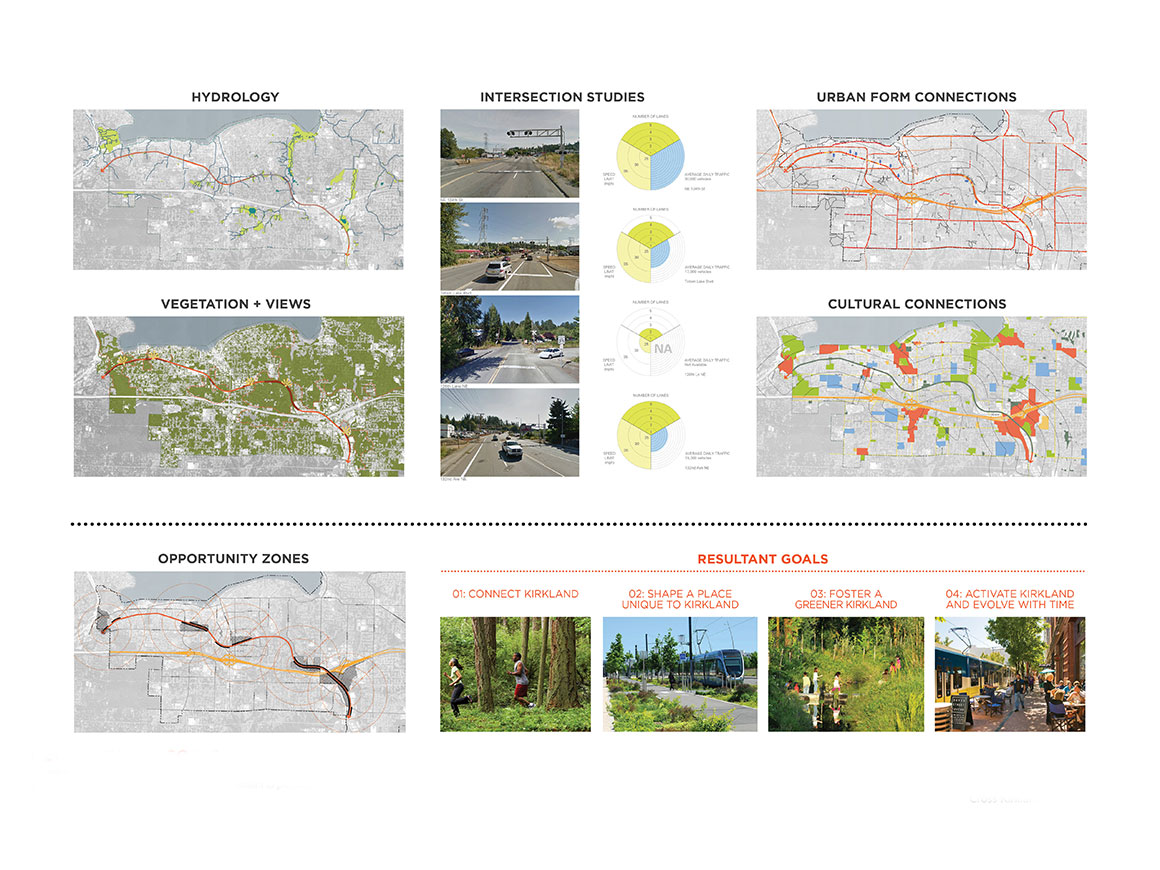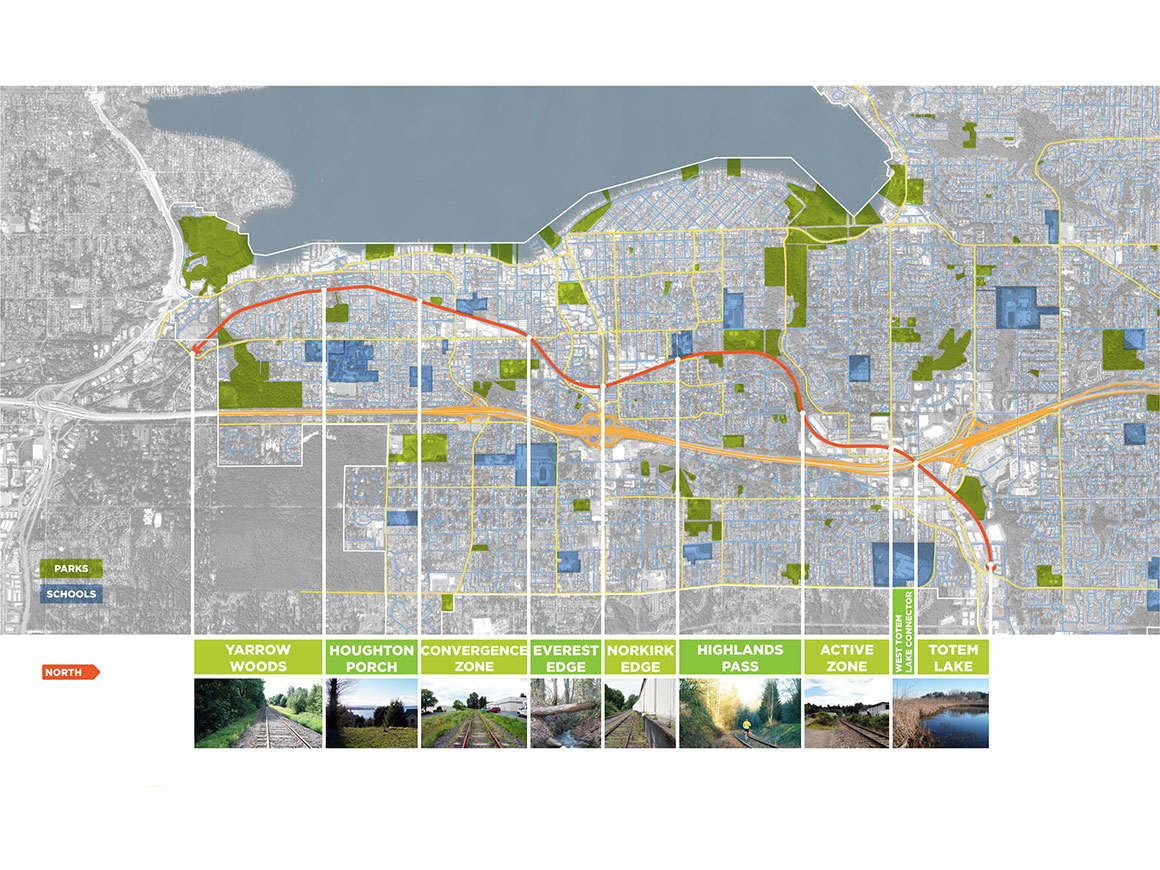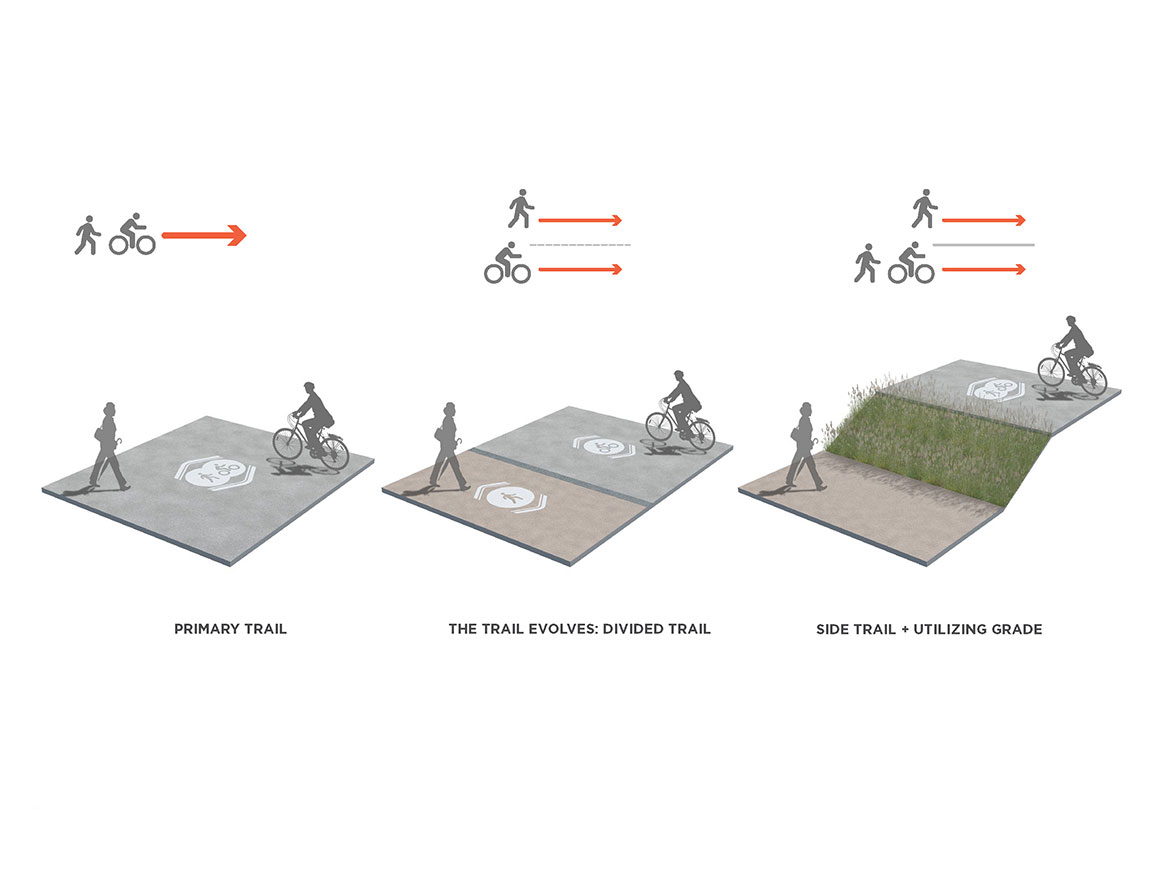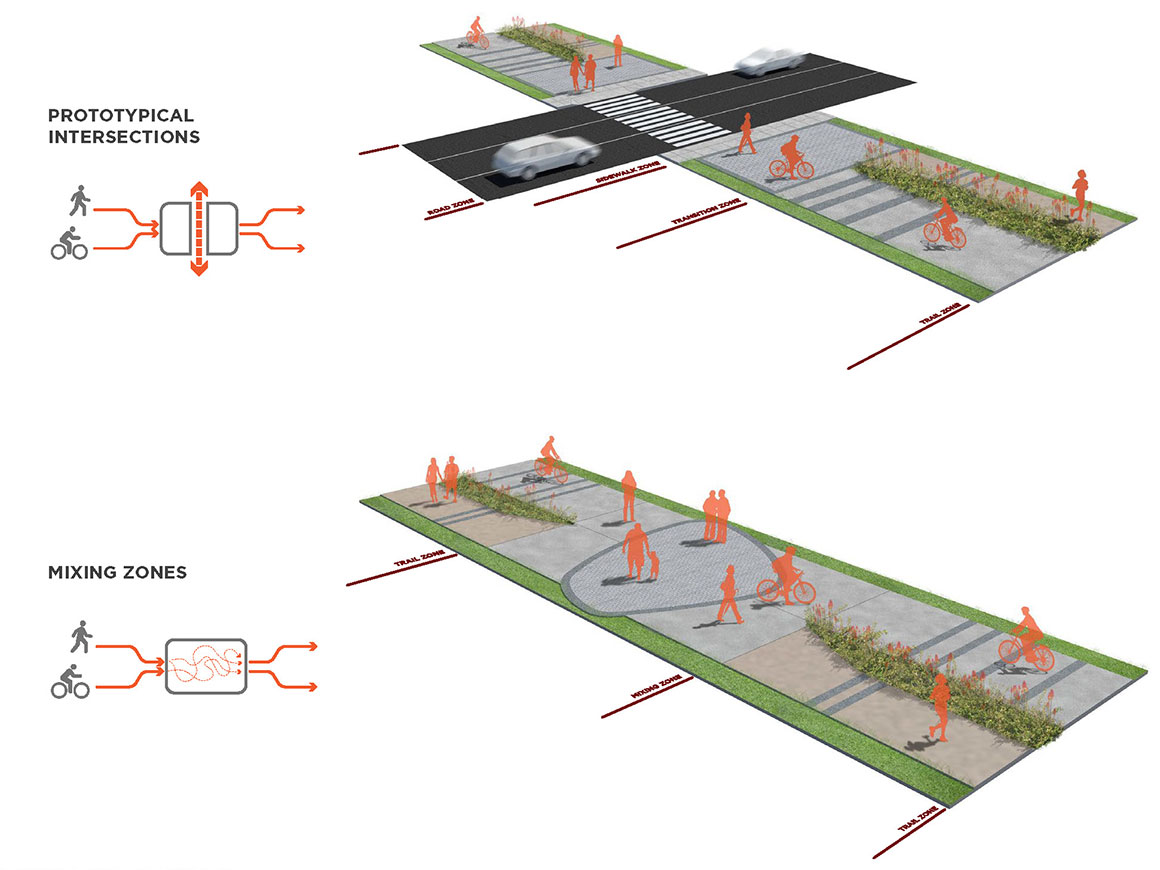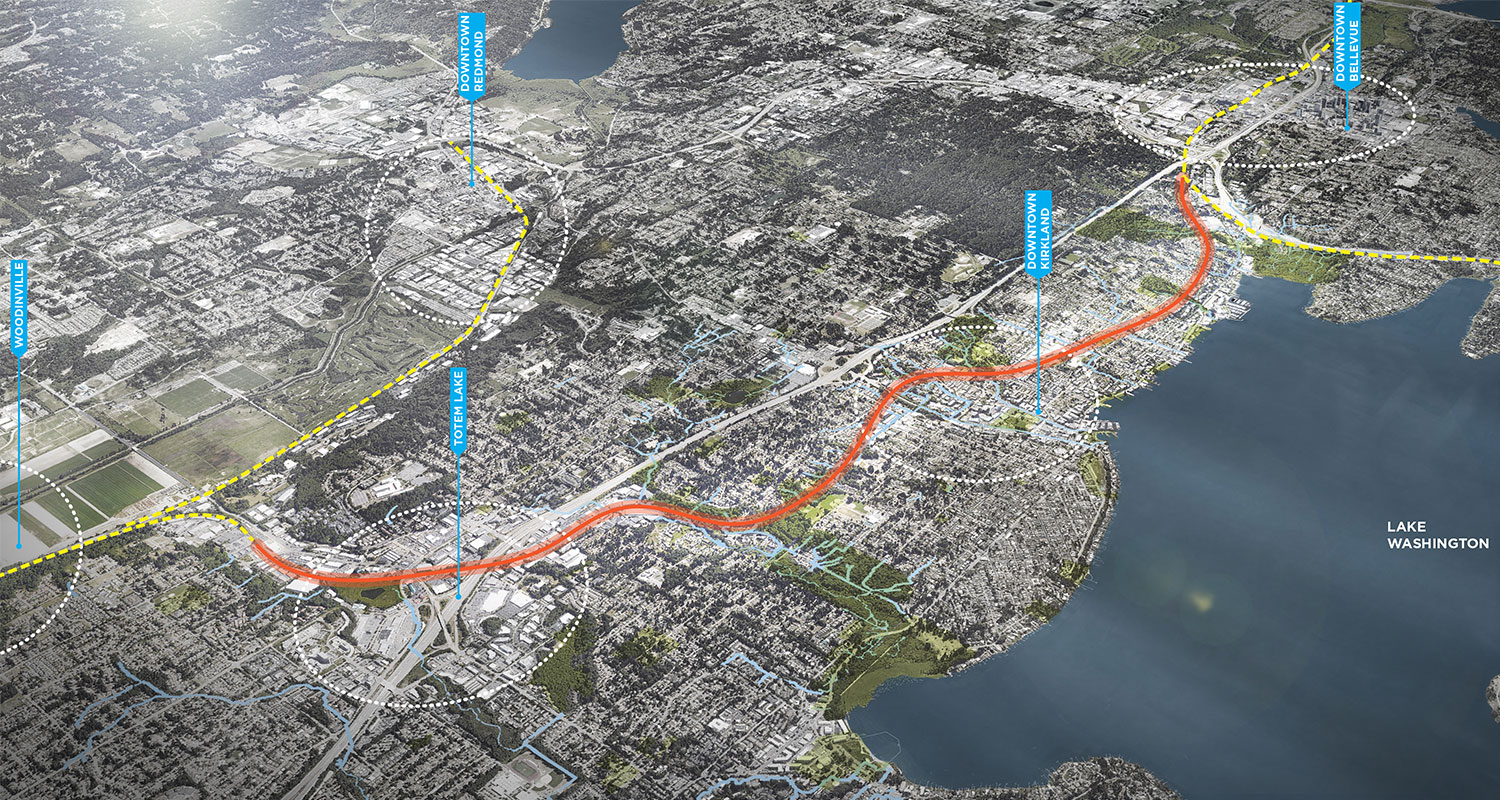
Cross Kirkland Corridor Master Plan
Kirkland, WA
Formerly a BNSF rail line and a physical boundary, the Cross Kirkland Corridor is being reimagined as a central spine and destination that unites Kirkland’s neighborhoods and serves a broad range of users. The master plan defines a corridor for active and passive recreation and create wildlife habitat preservation. The interim corridor, the second section of the Eastside Rail Corridor (ERC) to be designed, is already activated and become a catalyst for business development and investment for underutilized areas along its route.
The master plan defines a corridor that evolves over time and leads the city toward achieving existing and future policy and development goals. It is designed to adapt and evolve to meet the needs of a growing city and region, including balanced transportation solutions for today and one day could include high capacity transit and rail. The layout of near-term and long-term corridor elements minimizes fragmentation of the corridor and maintains maximum connectivity in the public realm while allowing transit, rail and utilities to be integrated in a way that builds on, rather than negatively impacts, cumulative improvements to the corridor.
Award: ASLA, Washington Chapter Honor Award for Planning, 2016
Kirkland, WA
Formerly a BNSF rail line and a physical boundary, the Cross Kirkland Corridor is being reimagined as a central spine and destination that unites Kirkland’s neighborhoods and serves a broad range of users. The master plan defines a corridor for active and passive recreation and create wildlife habitat preservation. The interim corridor, the second section of the Eastside Rail Corridor (ERC) to be designed, is already activated and become a catalyst for business development and investment for underutilized areas along its route.
The master plan defines a corridor that evolves over time and leads the city toward achieving existing and future policy and development goals. It is designed to adapt and evolve to meet the needs of a growing city and region, including balanced transportation solutions for today and one day could include high capacity transit and rail. The layout of near-term and long-term corridor elements minimizes fragmentation of the corridor and maintains maximum connectivity in the public realm while allowing transit, rail and utilities to be integrated in a way that builds on, rather than negatively impacts, cumulative improvements to the corridor.
Award: ASLA, Washington Chapter Honor Award for Planning, 2016
